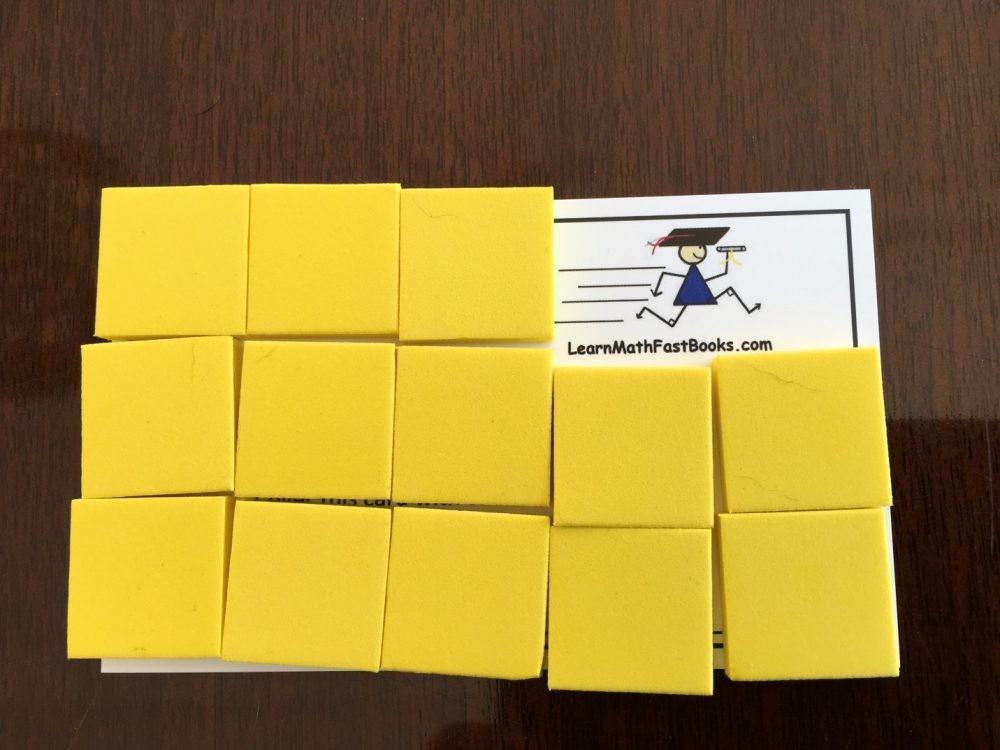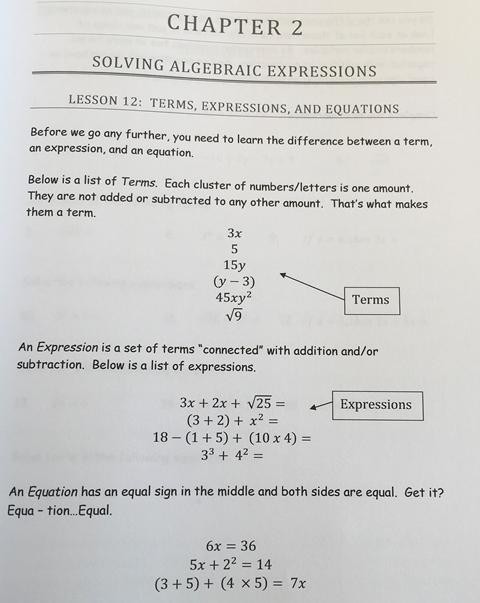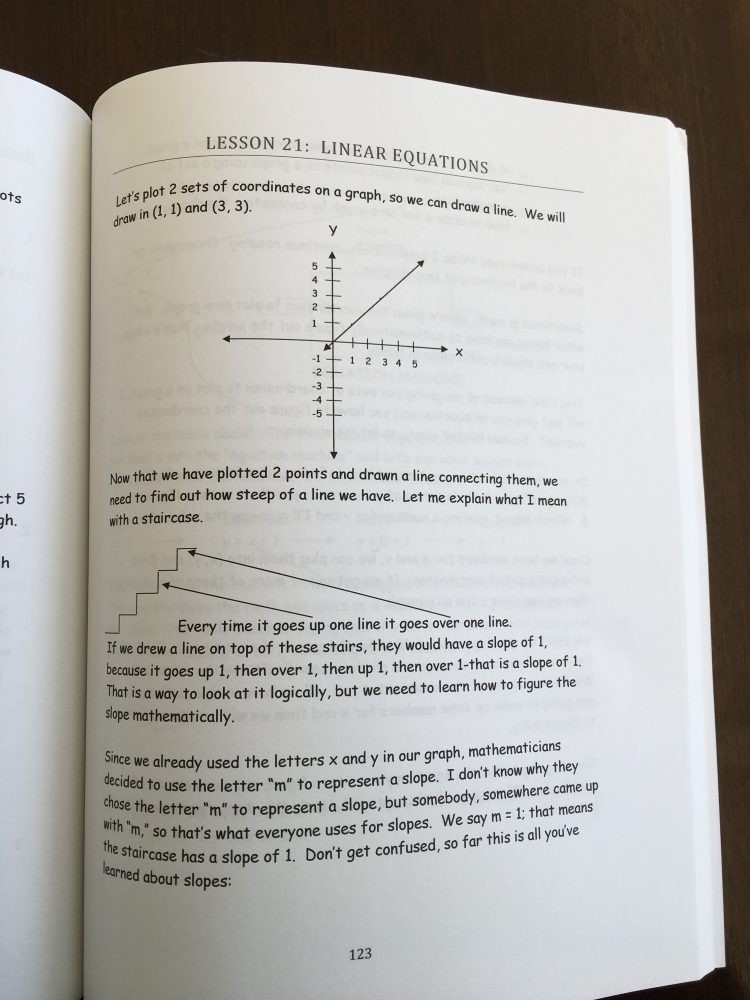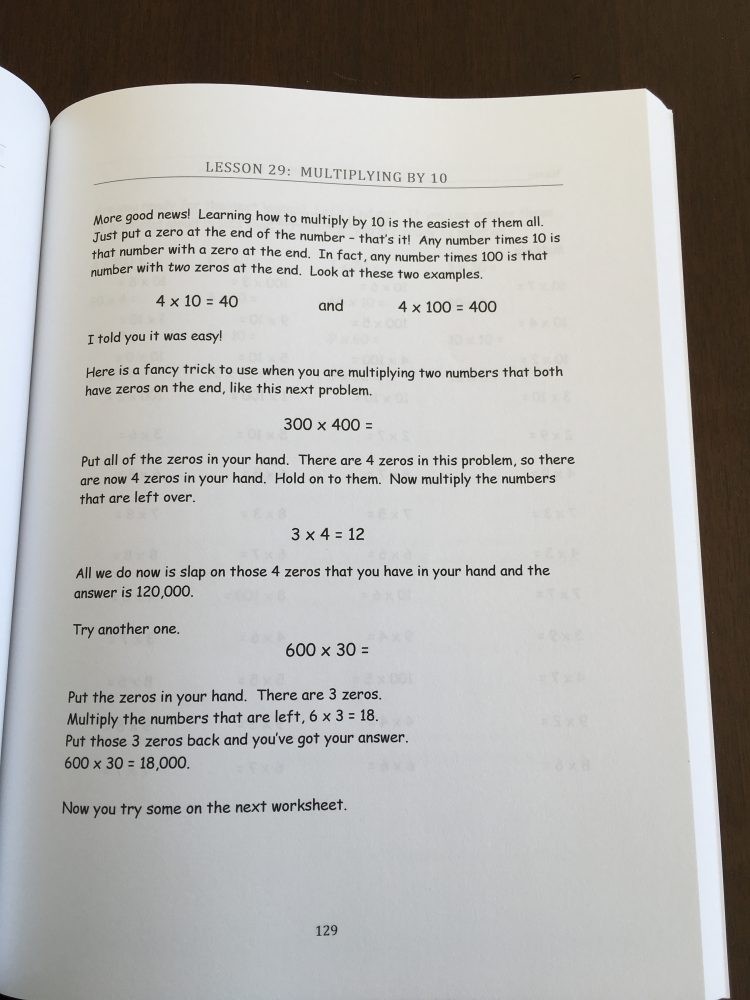Want to know How To Learn Math Fast and effectively? Math proficiency opens doors to numerous opportunities and strengthens problem-solving abilities. At LEARNS.EDU.VN, we understand the challenges students face in mastering math and provide innovative solutions. Discover effective strategies and resources to accelerate your math learning journey and build a solid foundation. Unlock your mathematical potential with speed learning, accelerated math learning, and efficient math techniques.
1. Understanding The Fundamentals Of Fast Math Learning
Mastering mathematics swiftly involves grasping core principles, adopting effective study methods, and cultivating a mindset conducive to efficient learning. This section delves into these pivotal elements, offering strategies to optimize your math learning experience.
1.1. Key Principles For Accelerated Math Learning
Several fundamental principles underpin the ability to learn math quickly. These include:
-
Focus on Conceptual Understanding: Rote memorization can hinder long-term retention. Instead, concentrate on understanding the why behind mathematical concepts.
- Example: Instead of just memorizing the quadratic formula, understand its derivation and how it relates to completing the square.
-
Active Learning: Engage actively with the material. Passive reading or listening is less effective than actively solving problems and explaining concepts in your own words.
- Technique: The Feynman Technique involves explaining a concept as if you were teaching it to someone else. Identify gaps in your understanding and revisit the material.
-
Spaced Repetition: Review material at increasing intervals. This technique reinforces learning and helps move information from short-term to long-term memory.
- Tool: Use flashcards or apps like Anki to implement spaced repetition.
-
Consistent Practice: Regular practice is essential for mastering math. Dedicate specific time slots each day for math practice.
- Schedule: Aim for at least 30-60 minutes of focused practice daily.
-
Seek Feedback: Identify your mistakes and learn from them. Don’t hesitate to ask for help when you’re stuck.
- Resources: Join online forums, attend tutoring sessions, or consult with teachers and peers.
1.2. Effective Study Habits For Math Proficiency
Developing effective study habits is crucial for learning math quickly and efficiently. Consider the following practices:
-
Create a Study Schedule: Allocate specific times for math study, ensuring consistency.
- Time Management: Use a planner or digital calendar to schedule study sessions and track progress.
-
Minimize Distractions: Find a quiet environment free from interruptions.
- Environment: Turn off social media notifications and inform family members to respect your study time.
-
Break Down Complex Problems: Divide large problems into smaller, manageable steps.
- Technique: Use the “divide and conquer” approach to simplify complex tasks.
-
Use Visual Aids: Diagrams, charts, and graphs can help visualize abstract concepts.
- Tools: Use graphing calculators, online tools like Desmos, or create hand-drawn diagrams.
-
Teach Others: Explaining concepts to someone else reinforces your understanding and helps identify gaps.
- Method: Form a study group and take turns teaching each other.
1.3. Cultivating A Growth Mindset In Mathematics
A growth mindset, the belief that abilities can be developed through dedication and hard work, is vital for math success.
-
Embrace Challenges: View difficult problems as opportunities to learn and grow.
- Perspective: Instead of saying “I can’t do this,” try “I can’t do this yet.”
-
Learn From Mistakes: Analyze errors to understand where you went wrong and how to improve.
- Analysis: Keep a mistake journal to track common errors and patterns.
-
Value Effort Over Talent: Recognize that effort and persistence are more important than innate ability.
- Attitude: Celebrate progress and effort, not just perfect scores.
-
Seek Inspiration: Read about successful mathematicians and their struggles to gain perspective and motivation.
- Examples: Biographies of mathematicians like Emmy Noether or Srinivasa Ramanujan can be inspiring.
2. Proven Techniques To Accelerate Math Learning
Speeding up your math learning process involves employing specific techniques tailored to different mathematical concepts. This section outlines practical methods for various areas, including algebra, geometry, calculus, and arithmetic.
2.1. Mastering Algebra Quickly
Algebra forms the backbone of higher mathematics. Here’s how to master it efficiently:
-
Understand Basic Principles: Ensure a solid grasp of fundamental concepts like variables, equations, and inequalities.
- Resources: Utilize introductory algebra textbooks and online courses such as those offered by Khan Academy.
-
Practice Solving Equations: Regularly solve various types of algebraic equations.
- Types: Linear, quadratic, and simultaneous equations.
-
Use Mnemonics: Employ memory aids to remember formulas and rules.
- Example: Use “PEMDAS” (Parentheses, Exponents, Multiplication and Division, Addition and Subtraction) to remember the order of operations.
-
Visualize Algebraic Concepts: Use graphs and diagrams to understand relationships between variables.
- Tools: Graphing calculators or software like GeoGebra can be helpful.
-
Apply Algebra to Real-World Problems: Solve practical problems to reinforce your understanding.
- Examples: Calculating interest rates, determining the trajectory of a projectile.
2.2. Efficient Strategies For Geometry
Geometry involves spatial reasoning and understanding shapes and their properties. These strategies can help:
-
Memorize Key Theorems and Postulates: Learn essential geometric principles.
- Examples: Pythagorean theorem, triangle inequality theorem.
-
Draw Diagrams: Visual representation is crucial in geometry. Always draw diagrams to understand the problem.
- Technique: Label all known values and relationships on the diagram.
-
Use Geometric Software: Tools like Sketchpad or GeoGebra can aid in visualizing complex geometric figures.
- Benefits: Interactive exploration of geometric properties.
-
Practice Proofs: Develop logical reasoning skills by working through geometric proofs.
- Approach: Start with simple proofs and gradually move to more complex ones.
-
Relate Geometry to Real-World Applications: Understand how geometry is used in architecture, engineering, and design.
- Examples: Calculating the volume of a building, designing a bridge.
- Examples: Calculating the volume of a building, designing a bridge.
2.3. Calculus Made Easy: Tips And Tricks
Calculus can be challenging, but these techniques can simplify the learning process:
-
Master Pre-Calculus Concepts: Ensure a strong foundation in algebra, trigonometry, and analytic geometry.
- Review: Focus on functions, limits, and trigonometric identities.
-
Understand the Fundamental Theorem of Calculus: This theorem connects differentiation and integration.
- Significance: Grasping this connection simplifies many calculus problems.
-
Practice Differentiation and Integration: Regularly practice finding derivatives and integrals of various functions.
- Functions: Polynomial, trigonometric, exponential, and logarithmic functions.
-
Use Online Resources: Websites like Paul’s Online Math Notes provide comprehensive calculus tutorials.
- Benefits: Access to detailed explanations and practice problems.
-
Apply Calculus to Real-World Problems: Understand how calculus is used in physics, engineering, and economics.
- Examples: Calculating velocity and acceleration, optimizing business profits.
2.4. Arithmetic Shortcuts And Mental Math Techniques
Developing mental math skills can significantly improve your calculation speed and accuracy:
-
Master Basic Math Facts: Memorize addition, subtraction, multiplication, and division facts.
- Techniques: Use flashcards, apps, or games to reinforce these facts.
-
Learn Number Sense: Develop an intuitive understanding of numbers and their relationships.
- Techniques: Practice estimating, rounding, and using benchmarks.
-
Use Arithmetic Shortcuts: Employ tricks to simplify calculations.
| Shortcut | Example | Explanation |
|---|---|---|
| Multiplying by 11 | 34 x 11 = 374 | Add the digits together (3 + 4 = 7) and place the result between the digits. If the sum is greater than 9, carry the tens digit. |
| Squaring Numbers Ending in 5 | 65^2 = 4225 | Multiply the tens digit by the next higher digit (6 x 7 = 42) and append 25 to the result. |
| Percentage Calculation | 15% of 200 = 30 | Multiply the numbers as if there were no decimal points (15 x 200 = 3000). Place the decimal point two places from the right (30.00). |
| Dividing by 5 | 120 / 5 = 24 | Multiply the number by 2 (120 x 2 = 240) and move the decimal point one place to the left. |





-
Practice Mental Math Regularly: Dedicate time each day to practice mental calculations.
- Tools: Use mental math apps or websites, or challenge yourself with daily problems.
3. Resources And Tools For Fast Math Learning
Leveraging the right resources and tools can greatly enhance your math learning speed and effectiveness. This section highlights various options, including online platforms, textbooks, apps, and tutoring services.
3.1. Online Platforms And Websites
Numerous online platforms offer comprehensive math courses and resources:
-
Khan Academy: Provides free, high-quality math lessons and practice exercises.
- Benefits: Covers a wide range of topics from basic arithmetic to advanced calculus.
-
Coursera: Offers math courses from top universities around the world.
- Benefits: Access to structured courses with video lectures, assignments, and quizzes.
-
edX: Similar to Coursera, provides math courses from various institutions.
- Benefits: Flexible learning options and certificates of completion.
-
Wolfram Alpha: A computational knowledge engine that can solve complex math problems.
- Benefits: Provides step-by-step solutions and visualizations.
-
Mathway: An online calculator that solves a variety of math problems.
- Benefits: Quick solutions for homework and practice problems.
3.2. Textbooks And Workbooks
Traditional textbooks and workbooks remain valuable resources for math learning:
-
Schaum’s Outlines: Offers comprehensive coverage of various math topics with plenty of practice problems.
- Benefits: Detailed explanations and worked-out solutions.
-
Practice Makes Perfect Series: Provides targeted practice in specific math areas.
- Benefits: Focuses on building skills through repetition.
-
Art of Problem Solving: Challenges students with advanced math problems.
- Benefits: Develops problem-solving skills and critical thinking.
- Benefits: Develops problem-solving skills and critical thinking.
3.3. Mobile Apps For Math Learning
Mobile apps offer convenient and interactive ways to learn math:
-
Photomath: Solves math problems by scanning them with your phone’s camera.
- Benefits: Step-by-step solutions and explanations.
-
Symbolab: Provides solutions to a wide range of math problems.
- Benefits: Detailed solutions and visualizations.
-
Prodigy Math Game: An engaging math game for elementary and middle school students.
- Benefits: Makes learning math fun and interactive.
-
Math Workout: Offers a variety of math exercises to improve mental math skills.
- Benefits: Tracks progress and provides personalized feedback.
3.4. Tutoring Services And Math Centers
Personalized tutoring can provide targeted support and guidance:
-
Private Tutors: Offer one-on-one instruction tailored to your specific needs.
- Benefits: Personalized attention and customized learning plans.
-
Mathnasium: A math learning center that provides customized learning plans and instruction.
- Benefits: Structured curriculum and supportive learning environment.
-
Kumon: A learning center that focuses on building math skills through repetition.
- Benefits: Systematic approach to mastering math concepts.
4. Strategies For Different Learning Styles
Recognizing your learning style and adapting your study methods accordingly can significantly improve your math learning speed and effectiveness. This section explores various learning styles and provides tailored strategies for each.
4.1. Visual Learners
Visual learners benefit from seeing information presented in a visual format. Strategies include:
-
Use Diagrams and Charts: Create visual representations of math concepts.
- Examples: Flowcharts, mind maps, and graphs.
-
Watch Video Tutorials: Utilize video lessons that demonstrate problem-solving techniques.
- Resources: YouTube channels like Khan Academy and PatrickJMT.
-
Use Color-Coding: Assign different colors to different concepts to aid memory.
- Technique: Use colored pens or highlighters when taking notes.
-
Use Flashcards with Images: Create flashcards with visual cues to help remember formulas and concepts.
- Tools: Apps like Anki or Quizlet allow you to create flashcards with images.
4.2. Auditory Learners
Auditory learners learn best by hearing information. Strategies include:
-
Listen to Lectures and Recordings: Attend math lectures and review recordings.
- Technique: Record your own notes and listen to them later.
-
Participate in Discussions: Engage in group discussions to clarify concepts.
- Benefits: Hearing different perspectives can deepen understanding.
-
Use Mnemonics and Rhymes: Create memory aids that involve sound.
- Example: Create a song or rhyme to remember a formula.
-
Read Math Problems Aloud: Reading problems aloud can help process information.
- Technique: Explain the steps to yourself as you solve the problem.
4.3. Kinesthetic Learners
Kinesthetic learners learn best by doing and experiencing. Strategies include:
-
Use Manipulatives: Use physical objects to understand math concepts.
- Examples: Blocks, counters, and geometric solids.
-
Solve Problems Actively: Work through problems step-by-step, rather than passively reading solutions.
- Technique: Write out each step as you solve the problem.
-
Teach Others: Explaining concepts to others reinforces your understanding.
- Benefits: Active recall and application of knowledge.
-
Take Breaks and Move Around: Incorporate movement into your study routine.
- Technique: Stand up and stretch or walk around during breaks.
4.4. Read/Write Learners
Read/write learners prefer to learn through reading and writing. Strategies include:
-
Take Detailed Notes: Write comprehensive notes during lectures and while studying.
- Technique: Organize notes into a structured outline.
-
Rewrite Notes: Rewriting notes reinforces memory and understanding.
- Benefits: Active processing of information.
-
Read Textbooks and Articles: Utilize textbooks and articles to gain a deeper understanding of math concepts.
- Technique: Highlight key points and summarize sections.
-
Practice Writing Solutions: Practice writing out solutions to problems in a clear and organized manner.
- Benefits: Improves problem-solving skills and clarity of thought.
5. Overcoming Common Challenges In Math Learning
Many students face common challenges when learning math. Addressing these issues effectively can significantly improve your learning speed and confidence.
5.1. Math Anxiety
Math anxiety can hinder performance and motivation. Strategies to overcome it include:
-
Identify and Challenge Negative Thoughts: Recognize negative self-talk and replace it with positive affirmations.
- Examples: “I can do this,” “I am capable of learning math.”
-
Practice Relaxation Techniques: Use techniques like deep breathing or meditation to reduce anxiety.
- Tools: Apps like Calm or Headspace offer guided meditation.
-
Focus on Small Steps: Break down complex problems into smaller, manageable steps.
- Benefits: Reduces overwhelm and builds confidence.
-
Seek Support: Talk to teachers, tutors, or counselors about your anxiety.
- Benefits: Provides emotional support and practical strategies.
5.2. Difficulty With Abstract Concepts
Abstract concepts can be challenging to grasp. Strategies to aid understanding include:
-
Use Concrete Examples: Relate abstract concepts to real-world situations.
- Examples: Using apples to illustrate fractions, using money to explain decimals.
-
Visualize Concepts: Use diagrams, graphs, and models to visualize abstract ideas.
- Tools: Online graphing calculators or software like GeoGebra.
-
Break Down Complex Ideas: Divide complex concepts into smaller, more manageable parts.
- Technique: Focus on understanding each part before moving on to the whole.
-
Seek Clarification: Don’t hesitate to ask for help from teachers or tutors.
- Benefits: Personalized explanations and support.
5.3. Procrastination
Procrastination can hinder consistent progress. Strategies to overcome it include:
-
Set Specific Goals: Define clear, achievable goals for each study session.
- Examples: Complete five practice problems, review one chapter.
-
Break Tasks into Smaller Steps: Divide large tasks into smaller, more manageable steps.
- Technique: Use the Pomodoro Technique: work for 25 minutes, then take a 5-minute break.
-
Eliminate Distractions: Create a quiet study environment free from interruptions.
- Environment: Turn off social media notifications and inform family members to respect your study time.
-
Reward Yourself: Celebrate your accomplishments to stay motivated.
- Examples: Take a short break, watch an episode of your favorite show.
5.4. Lack Of Confidence
Lack of confidence can lead to self-doubt and hinder progress. Strategies to build confidence include:
-
Focus on Strengths: Identify your strengths and build upon them.
- Technique: Make a list of your accomplishments in math.
-
Celebrate Small Wins: Acknowledge and celebrate your progress, no matter how small.
- Benefits: Boosts motivation and self-esteem.
-
Practice Positive Self-Talk: Replace negative thoughts with positive affirmations.
- Examples: “I am capable of learning math,” “I can solve this problem.”
-
Seek Encouragement: Surround yourself with supportive friends, family, and teachers.
- Benefits: Provides emotional support and encouragement.
- Benefits: Provides emotional support and encouragement.
6. Optimizing Your Learning Environment
Creating an optimal learning environment is crucial for fast and efficient math learning. This section explores how to set up a conducive study space and manage your time effectively.
6.1. Setting Up A Conducive Study Space
A well-organized study space can significantly enhance your focus and productivity:
-
Choose a Quiet Location: Select a location free from distractions.
- Examples: A library, a home office, or a quiet corner in your home.
-
Ensure Good Lighting: Proper lighting reduces eye strain and improves focus.
- Tip: Use natural light whenever possible.
-
Organize Your Materials: Keep your textbooks, notebooks, and other materials organized and easily accessible.
- Tools: Use shelves, drawers, and organizers to keep your study space tidy.
-
Minimize Clutter: Remove unnecessary items from your study space to reduce distractions.
- Tip: Keep only essential materials on your desk.
-
Personalize Your Space: Add elements that make you feel comfortable and motivated.
- Examples: Plants, artwork, or inspirational quotes.
6.2. Time Management Strategies For Math Studies
Effective time management is essential for balancing math studies with other commitments:
-
Create a Study Schedule: Allocate specific times for math study each day or week.
- Time Management: Use a planner or digital calendar to schedule study sessions.
-
Prioritize Tasks: Focus on the most important tasks first.
- Technique: Use the Eisenhower Matrix to prioritize tasks based on urgency and importance.
-
Break Tasks into Smaller Steps: Divide large tasks into smaller, more manageable steps.
- Technique: Use the Pomodoro Technique: work for 25 minutes, then take a 5-minute break.
-
Set Realistic Goals: Set achievable goals for each study session.
- Examples: Complete five practice problems, review one chapter.
-
Take Regular Breaks: Short breaks can help you stay focused and prevent burnout.
- Technique: Take a 5-10 minute break every hour to stretch, walk around, or do something relaxing.
6.3. The Importance Of Rest And Nutrition
Adequate rest and proper nutrition are crucial for optimal brain function and learning:
-
Get Enough Sleep: Aim for 7-8 hours of sleep each night to improve memory and focus.
- Tip: Establish a consistent sleep schedule.
-
Eat a Healthy Diet: Consume a balanced diet rich in fruits, vegetables, and whole grains to fuel your brain.
- Foods: Include foods rich in omega-3 fatty acids, such as fish and nuts.
-
Stay Hydrated: Drink plenty of water throughout the day to keep your brain functioning optimally.
- Tip: Carry a water bottle with you and refill it regularly.
-
Avoid Processed Foods: Limit your intake of processed foods, sugary drinks, and unhealthy fats.
- Benefits: Improves focus and reduces brain fog.
7. The Role Of Practice And Repetition
Consistent practice and repetition are fundamental to mastering math quickly and effectively. This section emphasizes the importance of regular practice and provides strategies to make it more efficient.
7.1. The Power Of Consistent Practice
Regular practice is essential for reinforcing math concepts and improving problem-solving skills:
-
Regular Study Sessions: Dedicate specific times each day or week for math practice.
- Time Management: Use a planner or digital calendar to schedule study sessions.
-
Daily Problem Solving: Solve math problems every day to reinforce concepts.
- Technique: Start with easier problems and gradually increase the difficulty.
-
Review Past Material: Regularly review previously learned material to prevent forgetting.
- Technique: Use spaced repetition to review material at increasing intervals.
-
Practice Different Types of Problems: Solve a variety of problems to develop problem-solving skills.
- Types: Word problems, algebraic equations, geometric proofs.
7.2. Techniques For Effective Repetition
Effective repetition involves revisiting material in a strategic manner to maximize retention:
-
Spaced Repetition: Review material at increasing intervals to reinforce learning.
- Tools: Use flashcards or apps like Anki to implement spaced repetition.
-
Interleaved Practice: Mix different types of problems together to improve retention.
- Benefits: Enhances problem-solving skills and prevents rote memorization.
-
Active Recall: Test yourself on the material without looking at your notes.
- Technique: Use flashcards or practice quizzes.
-
Teach Others: Explaining concepts to others reinforces your understanding.
- Benefits: Active recall and application of knowledge.
7.3. Using Practice Problems To Reinforce Learning
Practice problems are essential for applying math concepts and developing problem-solving skills:
-
Solve a Variety of Problems: Work through a variety of practice problems to gain experience.
- Resources: Textbooks, workbooks, online platforms.
-
Analyze Your Mistakes: Carefully analyze your mistakes to understand where you went wrong.
- Technique: Keep a mistake journal to track common errors and patterns.
-
Seek Help When Needed: Don’t hesitate to ask for help from teachers or tutors.
- Benefits: Personalized explanations and support.
-
Track Your Progress: Monitor your progress to stay motivated and identify areas for improvement.
- Tools: Use a notebook or spreadsheet to track your scores and completion rates.
8. Building A Strong Math Foundation
A strong math foundation is crucial for success in higher-level math courses. This section explores how to build a solid foundation and address gaps in your knowledge.
8.1. Identifying Knowledge Gaps
Identifying gaps in your knowledge is the first step in building a strong math foundation:
-
Review Basic Concepts: Start by reviewing basic math concepts.
- Areas: Arithmetic, algebra, geometry.
-
Take Practice Quizzes: Take practice quizzes to assess your understanding.
- Resources: Online platforms, textbooks, workbooks.
-
Seek Feedback: Ask teachers or tutors for feedback on your strengths and weaknesses.
- Benefits: Personalized assessment and guidance.
-
Self-Assessment: Reflect on your understanding of different math concepts.
- Technique: Write down areas where you feel confident and areas where you need improvement.
8.2. Addressing Fundamental Weaknesses
Once you’ve identified your weaknesses, you can take steps to address them:
-
Focus on Weak Areas: Dedicate extra time to studying areas where you struggle.
- Technique: Prioritize studying weak areas over strong areas.
-
Use Multiple Resources: Use a variety of resources to understand difficult concepts.
- Resources: Textbooks, online platforms, tutoring.
-
Break Down Complex Concepts: Divide complex concepts into smaller, more manageable parts.
- Technique: Focus on understanding each part before moving on to the whole.
-
Seek Help When Needed: Don’t hesitate to ask for help from teachers or tutors.
- Benefits: Personalized explanations and support.
- Benefits: Personalized explanations and support.
8.3. Strategies For Long-Term Retention
Long-term retention involves strategies to keep the information fresh in your mind:
-
Spaced Repetition: Review material at increasing intervals to reinforce learning.
- Tools: Use flashcards or apps like Anki to implement spaced repetition.
-
Interleaved Practice: Mix different types of problems together to improve retention.
- Benefits: Enhances problem-solving skills and prevents rote memorization.
-
Teach Others: Explaining concepts to others reinforces your understanding.
- Benefits: Active recall and application of knowledge.
-
Real-World Applications: Apply math concepts to real-world situations to reinforce learning.
- Examples: Calculating interest rates, determining the trajectory of a projectile.
9. Advanced Techniques For Rapid Math Acquisition
For those seeking to accelerate their math learning even further, advanced techniques can be employed to enhance understanding and retention.
9.1. The Feynman Technique
The Feynman Technique is a method for learning a concept quickly by explaining it in simple terms:
- Choose a Concept: Select a math concept you want to understand.
- Explain it Simply: Explain the concept as if you were teaching it to a child.
- Identify Gaps: Notice where you struggle to explain the concept.
- Review and Simplify: Go back to the source material and fill in the gaps, then simplify your explanation.
- Repeat: Continue this process until you can explain the concept clearly and simply.
9.2. Mind Mapping
Mind mapping is a visual technique for organizing information and understanding relationships between concepts:
- Start with a Central Idea: Write the main topic in the center of a page.
- Add Branches: Add branches for related subtopics.
- Use Keywords and Images: Use keywords and images to represent ideas.
- Connect Ideas: Connect related ideas with lines or arrows.
- Review and Refine: Review your mind map and refine it as needed.
9.3. Active Recall Testing
Active recall testing involves testing yourself on the material without looking at your notes:
- Create Flashcards: Create flashcards with questions on one side and answers on the other.
- Test Yourself: Test yourself on the material without looking at the answers.
- Identify Weak Areas: Notice which questions you struggle with.
- Review and Retest: Review the material and retest yourself on the weak areas.
10. Maintaining Momentum And Motivation
Staying motivated and maintaining momentum is crucial for long-term success in math learning. This section explores strategies to keep you engaged and inspired.
10.1. Setting Achievable Goals
Setting achievable goals helps you stay focused and motivated:
-
Specific Goals: Define clear, specific goals.
- Examples: Complete five practice problems, review one chapter.
-
Measurable Goals: Set goals that can be measured.
- Examples: Achieve a certain score on a quiz, complete a certain number of practice problems.
-
Achievable Goals: Set goals that are challenging but achievable.
- Technique: Start with small, easy goals and gradually increase the difficulty.
-
Relevant Goals: Set goals that are relevant to your overall learning objectives.
- Technique: Focus on goals that will help you achieve your long-term objectives.
-
Time-Bound Goals: Set goals with a specific timeline.
- Technique: Set deadlines for completing tasks and achieving goals.
10.2. Celebrating Successes
Celebrating successes helps you stay motivated and build confidence:
-
Acknowledge Accomplishments: Take time to acknowledge your accomplishments.
- Technique: Keep a list of your accomplishments in math.
-
Reward Yourself: Reward yourself for achieving your goals.
- Examples: Take a short break, watch an episode of your favorite show.
-
Share Your Successes: Share your successes with friends, family, or teachers.
- Benefits: Provides emotional support and encouragement.
- Benefits: Provides emotional support and encouragement.
10.3. Finding A Supportive Community
Surrounding yourself with a supportive community can help you stay motivated and inspired:
-
Join Study Groups: Participate in study groups with other students.
- Benefits: Provides opportunities for collaboration and support.
-
Seek Mentors: Find a mentor who can provide guidance and encouragement.
- Benefits: Personalized advice and support from an experienced individual.
-
Participate in Online Forums: Join online forums and communities dedicated to math learning.
- Benefits: Provides opportunities to connect with other learners and experts.
-
Connect with Teachers and Tutors: Build relationships with your teachers and tutors.
- Benefits: Personalized support and guidance.
FAQ: How To Learn Math Fast
1. What is the most effective way to learn math quickly?
The most effective way to learn math quickly involves understanding core concepts, practicing consistently, using effective study techniques, and seeking feedback. Focus on understanding the why behind the math, not just memorizing formulas.
2. How can I improve my math skills in a short amount of time?
To improve your math skills quickly, prioritize key concepts, practice regularly, use online resources like Khan Academy, and seek help when needed. Additionally, focus on addressing your weaknesses and building a strong foundation.
3. What are some proven techniques for accelerated math learning?
Proven techniques for accelerated math learning include spaced repetition, active recall, the Feynman Technique, and mind mapping. These methods enhance understanding and retention.
4. How can I overcome math anxiety?
Overcoming math anxiety involves identifying and challenging negative thoughts, practicing relaxation techniques, focusing on small steps, and seeking support from teachers, tutors, or counselors.
5. What role does practice play in learning math fast?
Consistent practice is essential for mastering math quickly. Regular practice reinforces concepts, improves problem-solving skills, and builds confidence.
6. Are there any shortcuts for learning math?
While there are arithmetic shortcuts, true mastery comes from understanding concepts, not just memorizing tricks. Focus on building a solid foundation and understanding the principles behind the shortcuts.
7. How important is it to build a strong math foundation?
A strong math foundation is crucial for success in higher-level math courses. It provides a solid base for understanding more complex concepts and solving challenging problems.
8. What tools and resources can help me learn math faster?
Various tools and resources can help, including online platforms like Khan Academy, textbooks like Schaum’s Outlines, mobile apps like Photomath, and personalized tutoring services.
9. How can I stay motivated while learning math?
Stay motivated by setting achievable goals, celebrating successes, finding a supportive community, and reminding yourself of the benefits of mastering math.
10. How can I adapt my study methods to my learning style?
Adapt your study methods by identifying your learning style (visual, auditory, kinesthetic, or read/write) and using strategies that align with your preferences. For example, visual learners can use diagrams and charts, while auditory learners can listen to lectures and recordings.
Learning math quickly is achievable with the right strategies, resources, and mindset. At LEARNS.EDU.VN, we are committed to providing you with the tools and support you need to succeed. Explore our comprehensive courses, expert guidance, and innovative learning techniques to unlock your mathematical potential.
Ready to transform your math learning experience? Visit learns.edu.vn today and discover how we can help you achieve your goals. Contact us at 123 Education Way, Learnville, CA 90210, United States, or via Whatsapp at +1 555-555-1212. Let’s embark on this journey together and make math learning faster, more effective, and enjoyable.